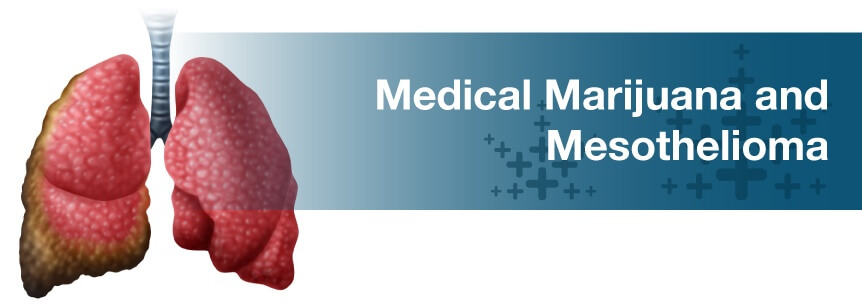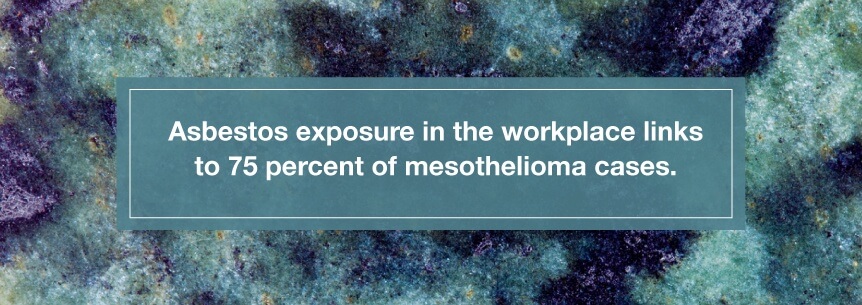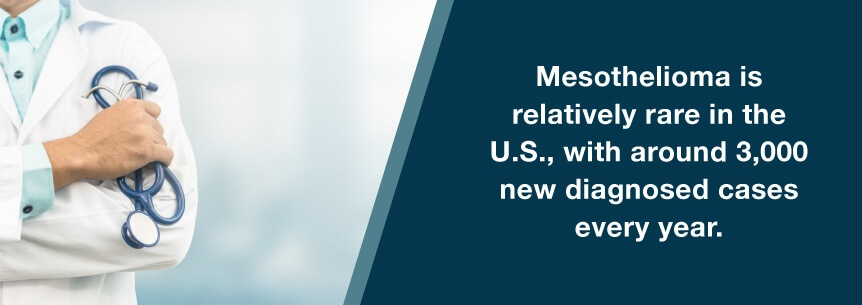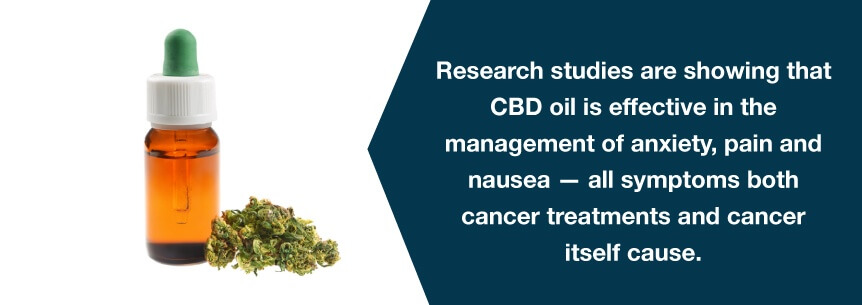
Individuals with mesothelioma often turn to alternative and complementary therapies to treat their cancer and ease their symptoms due to its effects on the body and mind. Integrating medical marijuana into cancer treatment plans has allowed many people to live better-quality lives when living with the disease.
Malignant mesothelioma is a form of cancer occurring in the thin layer of tissue covering most of the internal organs. It’s a highly aggressive type of cancer that is often deadly. But while a cure isn’t possible yet, treatments are available for mesothelioma.
You have a layer of specific cells known as mesothelial cells lining the inside of your abdomen, chest and the space surrounding your heart. Mesothelial cells also cover most of your internal organs’ outer surfaces. This lining the cells form is known as the mesothelium.
Your mesothelium makes a type of lubricating fluid that protects your organs by allowing them to move against one another. For instance, the fluid helps your lungs expand and contract inside your chest when you breathe. Your mesothelium goes by various names in different parts of your body, including:
Mesothelial tumors may form in any one of these linings, and they may be cancerous (malignant) or non-cancerous (benign). Mesothelioma is the cancerous tumor.
Surgeons can usually remove benign tumors surgically, and patients often don’t require any additional treatment once the tumor has been removed.
Working with asbestos is the primary risk factor for mesothelioma. Asbestos is a mineral group with thin, microscopic fibers. Since the fibers are resistant to chemicals, heat, and fire and don’t conduct electricity, workers have been mining and using asbestos in the automotive, construction and other industries widely.
Individuals can inhale or swallow tiny asbestos fibers when they become airborne, like during the manufacturing process. When this happens, it can cause serious health issues. Asbestos exposure in the workplace links to 75 percent of mesothelioma cases.

Presently, the only way of confirming a diagnosis of mesothelioma is by determining its cell type. Every cell type has various subtypes too. Some cell types include:
Diagnosing mesothelioma typically starts with the doctor using a biopsy to take a tissue sample for evaluation. Doctors classify mesothelioma based on the mesothelial layer the disease first occurred in. Different types of mesothelioma include the following.
Peritoneal mesothelioma starts in your abdomen lining, often spreading to your abdominal organs like your:
You can experience severe abdominal pain followed by abdominal effusion (fluid buildup) causing discomfort. While there’s a poor outlook for peritoneal mesothelioma, in recent years, it’s improved a little due to new treatments. Prognosis will vary from one person to the next, depending on specific diagnostic factors and the person’s situation.
You develop pleural mesothelioma in the pleura, which is the lining of your lungs. Pleural mesothelioma is the most common type of mesothelioma and accounts for around 80 percent of new cases.
A highly rare type of mesothelioma, testicular mesothelioma has fewer than 100 diagnosed cases worldwide. Researchers and doctors aren’t very clear on how it develops since there are only a few occurrences of this form of mesothelioma.
Pericardial mesothelioma is another uncommon type of the disease, making up less than one percent of all cases of mesothelioma. It starts in the pericardium, or heart cavity lining. As it progresses, it causes the heart to lose its ability to deliver the body oxygen. Its symptoms are similar to the symptoms you’d experience with a heart attack, including shortness of breath and chest pain.
Mesothelioma symptoms vary and depend on where your cancer occurs.
Pleural mesothelioma causes symptoms such as:
Peritoneal mesothelioma causes symptoms such as:
Pericardial mesothelioma causes symptoms like chest pains and breathing difficulty, while tunica vaginalis mesothelioma causes a mass or swelling on a testicle.
When pleural mesothelioma spreads throughout your chest, it adds pressure on your chest structures, causing complications like:
Your first emotion when you hear you that have cancer is likely to be shock. This reaction seems to be especially true of individuals receiving a mesothelioma diagnosis since, chances are, carcinogenic asbestos fiber exposure probably occurred between 20 and 50 years ago or more.
Anxiety and fear are common emotions. Many individuals fear the pain and suffering associated with cancer. The recommended treatments from your doctor may cause some anxiety since they often come with seriously harsh side effects, like chemotherapy, for example.
You may become uncertain of your future when you receive a diagnosis of mesothelioma, causing you to have feelings of hopelessness and sadness, leading to depression.
The American Cancer Society (ACS) provides the following mesothelioma statistics:

The American Society of Clinical Oncology (ASCO) provides these statistics about mesothelioma:
Mesothelioma’s history began in the early 1900s — British workers during this time worked in asbestos factories, where they started to experience a disturbingly high lung disease incidence rate. The first reported asbestosis case occurred in 1906 in a British asbestos worker. Mining and production asbestos-related lung disease issues became so well-known in the 1920s that in 1930, the British government ordered a study. Results from the study found that asbestos exposure did cause the occupational disease asbestosis.
Today, it’s well-known that the main cause of mesothelioma is asbestos exposure.
A mesothelioma treatment plan will depend on certain factors, like the stage of cancer, the cell type and the main site affected. Options of treatment will also depend on if your cancer has spread to your diaphragm, chest wall or lymph nodes or remains localized to your chest area. Your doctor will consider your overall health and age as well.
Physicians employ three standard treatments for mesothelioma: chemotherapy, radiation, and surgery.
In the majority of cases, the doctor will take a multimodal approach where they combine the three of these treatments. Studies show that a multimodal treatment approach is more effective than using an individual treatment by itself.
The latest treatment breakthroughs are helping patients live a better quality of life and increasing survival rates. Patients in the U.S. seeking treatment have world-class cancer centers available to them. Some of these centers even offer programs specific to studying and treating mesothelioma. Researchers are conducting clinical trials to help create treatment plans that may result in a higher long-term survival rate.
Surgery, chemo, and radiation continue to be the standard and best mesothelioma treatments. Researchers continue to look for new ways of performing these treatments and improving their efficacy. Because of this work:
Many satisfied users have recommended medical cannabis and claim that it has helped them deal with their cancer pain — including mesothelioma. But according to the Food and Drug Administration (FDA), no studies yet indicate CBD oil can stop or control cancer cell growth, even though people are making these claims.
Research studies are showing, however, that CBD oil is effective in the management of anxiety, pain and nausea — all symptoms both cancer treatments and cancer itself cause. Some individuals with cancer use the oil as a complementary treatment, using it along with the standard treatments like radiation and chemotherapy. Other people use medical marijuana by itself.

Although there are limited studies on cannabis for mesothelioma, you can’t ignore the anecdotal evidence of success with the herb, particularly cannabis oil. One success case, for instance, shows the therapeutic potential of medical marijuana for mesothelioma — the patient survived his mesothelioma because of cannabis oil even after being told he had only three months to live.
Contrary to what the FDA says, there is some evidence showing that medical weed does much more than treat symptoms. Small laboratory studies in animals show that the herb’s components can kill cancer cells. There’s huge potential in using medical cannabis for mesothelioma and other cancer types, but obtaining the permission to study and research it is difficult.
Mesothelioma symptoms include things like:
Medical pot treats all these symptoms.
Among the most proven effective uses of medical marijuana is relieving nausea and vomiting in cancer patients undergoing chemotherapy. The side effects of chemo can be so severe that they keep individuals from continuing their treatment. However, marijuana-related medicines have helped individuals obtain substantial relief from their symptoms, resulting in them continuing with the possible life-saving treatment. Dronabinol and Nabilone are some of these marijuana-related medicines and not only reduce nausea and vomiting but also help restore patients’ appetite and help them maintain or gain weight.
For many cancer patients, including those with mesothelioma, pain is a huge and debilitating symptom. A simple spray in the mouth of cannabinoids has helped patients experience more relief than they did with narcotics.
Living with mesothelioma also causes some patients emotional distress like:
Research shows cannabinoids help reverse these symptoms. Cannabidiol (CBD), in particular, has shown anti-anxiety effects in animal studies. In a study with humans, inhaling marijuana lowered cancer patients’ anxiety and improved their mood and general feelings of well-being.
These cannabis and mesothelioma strains have helped with many cancer patients’ symptoms.
Pain relief is the most common objective of using medical weed. Individuals with cancer often face debilitating pain. Some good pain-relieving strains include:
Medical marijuana helps eliminate nausea, keeping individuals from vomiting. Try nausea-relieving strains like:
Strains that help with depression while boosting the mood and energy and improving a patient’s outlook are:
When physicians don’t treat cancer, it can lead to wasting illness or cachexia. If you want to improve your appetite, you should know that these marijuana and mesothelioma strains can work:
Mesothelioma patients tend to experience breathing difficulties and have weak lungs. In this situation, a preferable way of consuming your medical cannabis would be through edibles to avoid aggravating your lung tissues. A lot of individuals say edible cannabis psychoactive effects are milder and provide a stronger body relief. The effects are also longer-lasting.
You can place drops of CBD oil from tinctures under your tongue too. They absorb quickly and are less sedating than edibles. Other people take capsules containing a mixture of cannabis and a certain oil.

Another option is applying your marijuana for mesothelioma treatment on your skin or taking it in suppository form.
Finally, some patients wear a transdermal patch or juice their raw cannabis. If you must inhale medical cannabis, use a vaporizer, which isn’t as aggravating on your lungs as smoking.
When people take marijuana at the appropriate dosage, they rarely experience negative side effects. However, if you misuse the herb, you could experience some temporary side effects, such as:
If you smoke marijuana through joints, you have an increased risk of respiratory problems, which could be especially problematic if you have COPD, asthma or other lung issues. Fortunately, you have alternative consumptions methods in the form of vaping, edibles, tinctures and more.
If you’re seeking mesothelioma symptom relief and are interested in learning more about or trying cannabis for mesothelioma, look no further than MarijuanaDoctors.com. Schedule an appointment with a qualified, local cannabis doctor through Marijuana Doctors to receive your recommendation for cannabis treatment. Once you receive your medical marijuana recommendation, you can browse through our extensive list of cannabis dispensaries to find one near you.
Find A Doctor Find A Dispensary